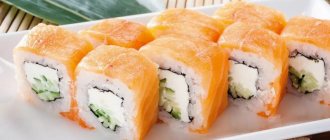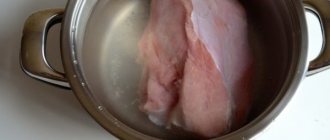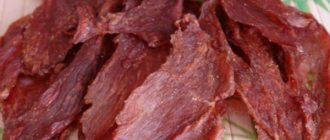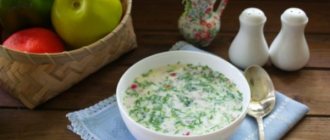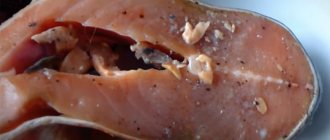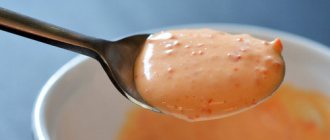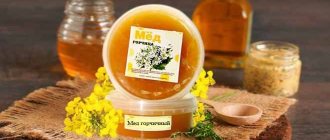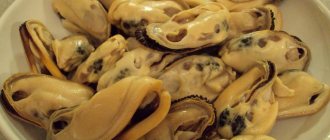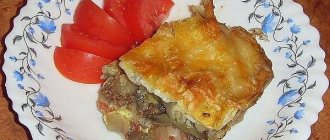Composition and benefits
The chemical composition of grain mustard sauce is represented by fatty acids, B vitamins, carotene, iron, magnesium, calcium and proteins.
With regular use of the product you can:
- lower blood pressure;
- get rid of migraines;
- reduce inflammation;
- relieve symptoms of rheumatism;
- increase appetite;
- improve digestion;
- improve metabolic processes;
- accelerate fat burning;
- overcome flatulence;
- relieve asthma attacks.
Interesting facts! Mustard seeds used to make sauce have high bactericidal properties.
If you eat 3 tsp daily. Grainy mustard sauce can speed up the burning of fat in the body and metabolism by 25%.
Grainy mustard helps the body easily digest high-protein foods.
Unique properties of mustard
The seeds of the plant contain various vitamins, microelements, and essential oils. Frequent consumption of mustard increases appetite, increases saliva production, and also normalizes the body's digestive processes. The grains of the plant are a good laxative and have anti-inflammatory properties.
According to scientific research, the product has been proven to help absorb fats and improve digestion. Mustard is recommended for use by older people to improve metabolism. Also, a small amount of it helps cope with diseases of the cardiovascular system.
Plant grains are rich in:
On this topic:
Winter preparation of beans in tomatoes - two in one: and...
Jul 25, 2020
For meat, fish, sauce and pizza - tomatoes in their own...
Jul 23, 2020
BACK FORWARD 1 of 259
- potassium;
- calcium;
- zinc;
- iron;
- vitamin A;
- other microelements.
Mustard is a unique spice that can be consumed even by pregnant women. It is prohibited only if it causes an allergic reaction.
French grain mustard
Ingredients:
- Yellow mustard beans - 1/3 cup;
- Black mustard beans – 2 tbsp;
- Powdered mustard – 2 tbsp;
- Water – 125 ml;
- Apple cider vinegar – ¼ cup;
- Lemon zest – 1 tsp;
- Orange juice – ¼ cup;
- Dried dill – 1 tsp;
- Salt – ½ tsp;
- Honey - ¼ cup.
Cooking method:
- Since we are preparing the mustard mixture, we will begin our cooking with its processing. Mix light and dark beans and grind them a little in a coffee grinder.
- Pour mustard powder, salt into the resulting mixture and season with vinegar, citrus juice and boiling water in the stated volumes. Mix everything and leave for 5 minutes.
- Now we need to transfer the mustard mass into the bowl of a blender or food processor, add the zest and dried dill and beat until creamy.
- So, in principle, our French mustard beans are ready, but among all the ingredients we still have honey. We can mix it in the general composition, or we can simply not add it. This, as they say, is a matter of taste.
- Store this spicy mixture in the refrigerator. And the scale of its application is truly enormous. This seasoning can be added to salads, as a sauce for vegetable, meat and fish dishes, and also on sandwiches. Believe me, you and your guests will be satisfied.
Bavarian mustard
A distinctive feature of Bavarian mustard is its spicy taste, sweet and hot at the same time. The classic recipe includes the following components:
- white mustard powder – about 100 g;
- yellow mustard powder – 1 des. l.;
- half tsp salt;
- about 100 ml of water;
- 100 ml apple cider vinegar;
- ground black pepper to taste;
- cloves to taste;
- cinnamon 1 stick;
- 150 g brown sugar;
- several bay leaves;
- juniper berries – 1 tsp.
Mustard powder should be mixed with salt, black pepper, cloves, cinnamon, chopped juniper berries and bay leaves. This mixture is poured with vinegar and put on fire. Without waiting for it to boil, pour in the pre-prepared sugar syrup. After boiling, the resulting mixture is filtered through a strainer, cooled to room temperature and stored in the refrigerator. The shelf life of the finished seasoning is only 2 days from the date of preparation.
How to store mustard
This product in all its forms should be kept away from the sun. Place the sauce in a tightly closed glass container and preferably in the refrigerator. Winter storage period is up to 3 months, in hot weather – no more than 5 weeks.
Grains and powder should not be left open: ground mustard absorbs moisture, which is very undesirable, and pests can grow in the grains. It is best to keep the grains in a linen bag.
We recommend growing your own mushrooms at home. Unique and affordable technology. TRY TO GET A HARVEST OF FRESH AND TASTY MUSHROOMS IN JUST A MONTH! All details and ordering by .
Homemade mustard powder (using cucumber pickle)
Ingredients:
- Mustard (powder) – 0.5 tbsp.
- Brine (cucumber).
- Sugar – 20 gr.
- Oil (sunflower) – 20 ml.
Cooking method:
- In a deep bowl you need to dissolve the mustard powder, add sugar and brine to it to the desired consistency.
- Then you need to put the resulting mass in a glass jar and cover it.
- Next, you need to put the jar in a warm place for 10 hours and after this time, remove the accumulated excess moisture from the surface.
- Then you need to add oil to the mustard.
- Also, for greater piquancy, you can add pepper, nutmeg, cloves and other spices to the mustard, if desired, along with the brine.
Recommendations for use
The most actively used part of the plant for medicinal and culinary purposes is the seeds. They are collected fully ripe, freed from the husk, and dried in the oven.
They retain healing properties for two years. Teas and decoctions are prepared from them.
In India, the seeds are first fried in a frying pan in oil so that they acquire a grayish tint and begin to burst. This, according to culinary experts, gives them a delicious peppery aroma.
Mustard, as a traditional seasoning for dishes, can be consumed daily, but in an amount limited to two to three teaspoons. It is not recommended to eat it before bed due to possible insomnia.
In cooking
It has many uses in the kitchen. It is good as a salad dressing, a seasoning for hot and cold dishes, and snacks.
It is used as an emulsifier: before cooking, it is used to lubricate pieces of meat, chicken, and fish to prevent juice from leaking out of them. The dishes turn out tender and juicy.
Here are some simple but interesting recipes.
Cauliflower puree. Not everyone likes the smell of this vegetable, but if you boil it, grind it in a blender and add mustard, you will get an original and tasty side dish for any meat dish.
Apple mustard. Apples are baked in the oven, rubbed through a sieve, mustard powder is added to the puree, and mixed. Then add a little sugar and salt, pour in apple cider vinegar. Full readiness occurs after 3 days.
Fried squid rings. The squid is cleaned, doused with boiling water, cut into rings, sprinkled with mustard seeds. Let it sit for two hours.
Break the eggs into a separate bowl and add a few more seeds. Squid rings are dipped in flour and then in eggs and placed in a frying pan. Fry on both sides.
Video recipe for making table mustard at home:
For weight loss
To fight excess weight, you need to eat three to five teaspoons of mustard seeds every day. Metabolism increases, the body burns an additional 45 calories every hour.
For weight loss, a wrap is sometimes used by adding honey to the powder in a ratio of 2:3. This mass is applied to areas of the body with patting movements, covered with film and wrapped for one hour.
At least 15 procedures will be required, but should be done no more than four times a week.
In folk medicine
A healing paste made from ground seeds and flour (in equal quantities, 50 g each), honey (a tablespoon) and vegetable oil (a teaspoon) helps with dry cough.
This paste is smeared on a cloth napkin and placed on the chest (but not on the heart) for a quarter of an hour.
For arthritis, a paste is prepared from ground seeds and horse chestnut flour (100 g of both). You will need 300 ml of any vegetable oil, white clay and a small amount of turpentine.
Lubricate a piece of cloth with the paste and apply it to the sore spots.
You can reduce the amount of sugar in your blood by eating white mustard seeds. Do not chew, wash down with spring water.
In cosmetology
What are the benefits of mustard for hair and skin? With the help of mustard, cosmetologists:
- stimulate hair growth by affecting hair follicles;
fight dandruff and oily hair;
relieve skin from acne;
freckles fade;
improve complexion;
reduce the appearance of cellulite on the skin.
Now you know what benefits homemade, grain and powder mustard can bring to the entire body - from nails to hair ends, to whom and in what cases it can cause harm.
Long ago, when it was customary to speak in the language of allegory, Alexander the Great was called to battle, sending him a whole bag of sesame seeds as a sign of how large the army of the one challenging him was.
The Macedonian responded with a bag of mustard, emphasizing that his army, although inferior in number, was much hotter, and therefore more invincible on the battlefield.
When there is a struggle for health, a small mustard seed can have a positive effect on this process.
It is only important to use this tool wisely and in a timely manner and remember that even the best natural preparations have their contraindications and limitations. .
Homemade mustard recipe
Homemade mustard is an excellent addition to meat dishes and soups. Spread it on bread and with hot soup! Wow! Breathtaking! Mustard will add a piquant taste when added to oil for salad dressing.
Ingredients:
- 3 table. spoons mustard powder
- 12 table. spoons of water
- 0.5 tsp. spoons of sugar
- 0.25 tsp. spoons of salt
- 1 – 1.5 tsp. spoons of vegetable oil
- Vinegar (optional)
Cooking method:
- To prepare, take mustard powder and add warm boiled water in a ratio of 1:4.
- If you want to make it spicy, add lukewarm water, and if you like mild mustard, add boiling water.
- Leave for 10 hours in a warm place.
- After this time, excess water must be carefully drained:
- Add sugar and salt to the mustard mixture.
- And optionally, vinegar. I didn’t add vinegar, it turned out quite spicy and tasty.
- From this quantity of products one hundred gram jar of spicy mustard is obtained.
- Here are some more homemade mustard recipes. Choose according to your taste.
Recipe: Mustard from ground grains
I bought a mixture of different types of mustard seeds. Here you can see yellow, brown, white, and black grains.
Grind the mustard seeds in small portions in a mortar.
This is perhaps the most tedious stage.
Here is our grated mustard. It is, of course, significantly different from mustard powder.
Pour boiling water over the resulting powder to make a paste. Mix well.
Pour a little more boiling water (a layer of about 7 mm) and leave for 30 minutes.
While the mustard swells, prepare the oil-pepper mixture. Black pepper (in my case, a mixture of peppers) will give the finished mustard not so much spiciness as aroma.
Grind the pepper in a mortar. I advise you not to buy ready-made ground pepper, but grind it yourself either in a mortar or in a mill. Moreover, do this not for future use, but immediately before use, since ground pepper quickly loses its aromatic oils.
Place the pepper in a container with two tablespoons of vegetable oil. I have refined sunflower. By the way, you can take the market one if you like the aroma of sunflower.
Mix well. The aromatic and pungent substances in peppers are highly soluble in fat. Therefore, this technique will make it possible to maximize the aroma of pepper in the finished mustard. Leave the oil to infuse for 15-20 minutes.
Here is our swollen mustard. She almost completely absorbed the water.
Add salt, sugar, vinegar. Instead of vinegar, you can use lemon juice, but then the mustard will be stored for no more than 5 days. Mix well.
Next, add the oil-pepper dressing.
Mix well, transfer to a jar with a lid and place in the refrigerator for 3-4 hours.
In principle, if you are not afraid of the coarse grinding of mustard seeds, you can stop there. But my favorite prefers a more uniform consistency. Therefore, after insisting, I put the mustard from the jar into a container and blended it with a blender. By the way, after that it became even sharper.
Next, transfer the mustard back into the jar and, closing the lid, put it in the refrigerator for another 3-4 hours.
Here it is, our aromatic ready-made mustard. It is paler than what we are used to seeing in the store. In principle, this can be corrected by “touching” it with curry.
Pairs perfectly with grilled sausages, lard and just black bread! Enjoy!
How to make mustard with grains
Continuing the topic of the article, consider a recipe for mustard with grains - an excellent seasoning for meat dishes. Some chefs use mustard with grains to prepare regular and New Year's salads.
The taste of this mustard is very delicate. It can be safely consumed even by people for whom spicy food is contraindicated. Sit back and carefully study the step-by-step cooking technology at home.
Ingredients:
- Mustard powder – 50 g.
- Mustard seeds – 50 g.
- Lemon juice – 4 tbsp. spoons.
- Vegetable oil – 4 tbsp. spoons.
- Sugar – 2 tbsp. spoons.
- Cucumber pickle, salt, cloves, nutmeg and pepper.
Preparation:
- Pour mustard powder into a deep bowl and pour in a little boiling water. To stir thoroughly. You should get a plastic mass. You can add a little water if the mixture is too thick.
- Smooth the mustard mixture thoroughly and pour boiling water on top. The liquid should cover the masses by two fingers. When the water has cooled, drain it.
- Add lemon juice, salt, seeds, pepper, butter and sugar to the mixture. After mixing, place into small jars, compact and close with lids.
- After 24 hours, add a little cucumber pickle and spices to each jar. I use cloves and nutmeg. That's all!
There are dozens of recipes for mustard with grains, but I like the cooking technology that I just shared. I hope you will like it too.
The role of vinegar
There is another important component of any mustard - vinegar. It is good if the manufacturer used a natural wine or apple product obtained by fermentation. However, today cheap synthetic vinegar, which is made by hydrolysis, is often added to mustard. Unfortunately, it is not always possible to find out exactly what ingredient was used - natural or artificial: the manufacturer is not required to indicate this on the label. However, some companies, in order to emphasize the exclusivity of their product, still write that they added wine or fruit vinegar to their mustard.
French Dijon mustard
Ingredients:
- Black and white mustard seeds,
- water,
- Herbs of Provence spice mixture
- liquid honey,
- cinnamon,
- carnation,
- salt,
- allspice peas,
- wine vinegar or white wine (I used vinegar),
- olive oil.
Cooking method:
- I cook everything by eye, I took a little of everything, because... This is my first time making this mustard myself. I put a small saucepan on the fire, put a mixture of “Provençal herbs”, 2 cloves, several peas of allspice into it and when it all boiled, added salt, 1 teaspoon and boiled for a couple of minutes.
- Meanwhile, in a special bowl, I tried to crush the seeds with a mortar - this is not an easy task, and I did not crush all the seeds.
- I poured mustard seeds into a jar, poured boiling water with seasonings (through a sieve), added a teaspoon of honey and a little cinnamon.
- The liquid should cover the seeds, but there should not be too much of it, otherwise the seeds will float as if separately.
- Pour vinegar (1 teaspoon) and olive oil. Leave to cool at room temperature, then put in the refrigerator.
- If you are not very successful in crushing the seeds, then you can either add a spoonful of mustard powder during the cooking process, or add mustard to the ready-made mustard, whichever you like best.
- Personally, I didn’t add anything; everything suited me.
Dijon mustard
A characteristic feature of Dijon mustard is its spiciness. Brown seeds, photos of which can easily be found on the Internet, help make mustard spicier.
Onions and garlic are chopped into small pieces, wine and honey are added. The resulting mixture is poured into a saucepan and mixed thoroughly. After boiling, the mixture should be cooked for 5 minutes over low heat. After cooking, the mixture is cooled to room temperature and then filtered. Next, an essential ingredient for all mustard recipes is added - mustard powder. All this must be thoroughly beaten. Next, add tomato paste and salt to taste. The resulting mixture is put on fire and boiled, stirring occasionally. In the end, the mixture should take on the consistency of thick sour cream. Next, the mixture is cooled and allowed to brew for about 48 hours. It is better to use glass dishes.
Dijon mustard - at home
What’s good about Dijon mustard is that it goes perfectly with meat, such as tongue, lard, and poultry. Dijon mustard will definitely be appreciated by lovers of spicy aromatic seasonings. It's the spiciness that sets it apart from other mustard recipes.
to contents ^
Homemade mustard marinated with cucumbers or tomatoes
Products:
- Cucumber marinade – 100 ml;
- mustard powder – 50 g;
- vegetable oil – 15 gr.
Preparing mustard in marinade
To begin with, the marinade needs to be strained through a sieve or cheesecloth so that the spices, garlic or other small products found in any marinade do not get into the prepared sauce.
Next, bring the strained marinade to a boil.
Add vegetable oil to it.
At the next stage, you need to pour mustard powder into the boiling marinade and stir thoroughly until smooth.
As in the first version of the recipe, transfer the prepared mustard into a jar, tightly close the lid, wrap it up and leave it to ripen for a day in a warm place.
This is how we got mustard, prepared with cucumber marinade.
I served the matured, spicy and slightly tart sauce to my household as a seasoning for jellied meat.
Table mustard
- ground cloves - 3 gr.
- ground ginger (root) - 6 gr.
- black mustard (dry) - 120 gr.
- wheat flour - 80 gr.
- wine vinegar - in fact
- granulated sugar - 60 gr.
- fine salt - 50 gr.
- ground black pepper - 13 gr.
- Mix all the spices, sugar, salt. Start pouring in the wine vinegar so that you end up with a thick mass.
- In another container, mix mustard powder and wheat flour, also dilute with vinegar to a paste-like consistency. Combine this composition with the previous one and place it in a hermetically sealed container.
- Place the finished product in the refrigerator for 12 hours, then remove excess liquid from the surface of the mass and start eating.
French mustard with honey
Ingredients:
- Mustard seeds - 100 grams
- Apple cider vinegar – 50 Milliliters
- Fruit juice - 50 milliliters (for example, apple)
- Honey - 3 tbsp. spoons
- Salt - 1 pinch
Cooking method:
- To prepare French mustard we need mustard seeds. They can be light or dark.
- You can use both options, it’s even more beautiful.
- I ended up with light grains. They need to be washed and soaked in vinegar. Leave the seeds like this in the refrigerator for a couple of days.
- After two days, we take the grains out of the refrigerator.
- Place a pan of water on the stove. Place the seeds there so that the water covers them completely.
- You can add allspice or black peppercorns if desired. Bring to a boil and after a minute remove from heat.
- Cool the seeds. Take a blender and grind 3 tbsp. spoons of boiled seeds along with honey, salt and fruit juice. Add this liquid mixture to the rest of the cooked seeds.
- We do not drain the seed decoction, but leave it as is.
- Mix everything and put it in the refrigerator to brew for a day.
- Now this dressing can be used for any salty dishes. French mustard has a very refined taste.
Recipes
Traditional classic recipe
We will need:
- hot or very heated water, in the amount of 100 ml;
- half a tablespoon of vegetable oil;
- salt to taste, or according to the rules - one quarter tablespoon;
- three tablespoons, preferably heaped, of mustard powder;
- half a tablespoon of sugar.
To obtain a fragrant and spicy mixture, it is better to use not store-bought mustard powder, but homemade mustard powder made with your own hands from grains.
- Take a glass jar and pour powder into it.
- Gently pour in water and stir thoroughly.
- Add salt and sugar to the resulting mixture and mix again.
- Close the container with a lid and place it in a warm place for a couple of hours.
- Take out the settled mixture and add vegetable oil to it.
- Let the finished product infuse for several days in a dark place.
- After a couple of days we check the mustard. If the consistency is too liquid, then you should keep it in the refrigerator for a day.
Mustard with honey
The seasoning goes perfectly with meat and fish dishes.
We will need:
- 50 ml. water;
- 10 gr. table salt;
- 50 gr. honey, preferably buckwheat;
- a tablespoon of vegetable oil;
- Art. spoon of lemon juice;
- 50 gr. powder.
Consider a step-by-step recipe for homemade mustard made from mustard powder:
- The sifted powder is mixed with salt.
- Gradually add water and mix thoroughly. The consistency of the mixture should resemble thick sour cream.
- Honey is melted and poured into the prepared mixture.
- Lemon juice and sunflower oil are added.
- Everything is thoroughly mixed.
- The finished product is poured into a clean glass jar, tightly closed with a lid and left to infuse in a dark place.
- After four days, open the jar, drain the excess liquid and check the mustard for readiness.
Store the prepared mustard sauce in the refrigerator.
Adding ginger or paprika will give honey mustard a special unique taste and endow it with healing properties.
Table mustard from the times of the USSR
During the existence of the Soviet Union, mustard was prepared according to established rules and GOST. It turned out to be quite spicy, tasty and fiery. Let's try to cook it at home.
We will need:
- two glasses of hot water;
- a glass of mustard powder;
- 3 tbsp. spoons of vegetable oil;
- half a teaspoon of salt;
- three tbsp. spoons of sugar;
- third tbsp. spoons of vinegar;
- two bay leaves;
- a little clove – 3 dried buds;
- a pinch of cinnamon;
- Ground black pepper is added to taste.
Consider the recipe for natural homemade mustard:
- Pour water into a saucepan and add dry cloves, sugar, ground pepper, bay leaf, salt, and cinnamon.
- The liquid is brought to a boil and removed from the heat.
- During the day, the resulting solution is infused, closing the container with a lid.
- The next day, boil again and add vinegar.
- The infusion is filtered.
- Take the powder and pour it into a separate bowl.
- Carefully pour in the boiled solution and mix thoroughly so that there are no lumps.
- The bowl with the resulting mixture is removed for three hours, maybe 4, in a warm place, first covered with a lid.
- Then vegetable oil is added and mixed well again.
You won't have to insist any longer. “Soviet” mustard can be eaten immediately. But you can infuse it for a day in a cool, dark place. The sauce is ideal for soups, lard, meat, sausages, jellied meat, fish and other dishes.
Russian
You will need for cooking:
- 100 gr. mustard powder;
- half a glass of hot or warm water;
- two tbsp. spoons of sunflower oil;
- half a glass of vinegar solution, preferably 3 percent;
- a tablespoon of sugar;
- 2 bay leaves;
- half a teaspoon of salt;
- 2-3 dry clove buds;
- a pinch of cinnamon.
How to do:
- Pour water into a saucepan and heat it up.
- Add sugar, bay leaf, dry cloves, salt, cinnamon.
- Bring everything to a boil, reduce the gas and cook the solution for several minutes.
- Remove from heat, let the infusion cool and strain.
- Pour the powder into a separate dry bowl.
- Carefully pour the cooled aqueous solution into the container with mustard powder.
- Mix thoroughly until a paste forms.
- Add vinegar and sunflower oil.
The product should be distributed into containers, closed tightly with a lid and refrigerated for a day.
Homemade spicy mustard from powder, classic recipe
Products:
- mustard powder – 1 pack (60 g);
- granulated sugar – 10 g;
- water - 130 ml;
- salt – ½ tsp;
- vegetable oil – 10 g;
- vinegar (6%) – 30 gr.
How to make hot mustard from powder
We begin the preparation by mixing mustard powder, table salt and granulated sugar in a deep container.
Next, boil the water and pour it in a small stream, while constantly stirring with a spoon, into a bowl with the mustard mixture. Mix the ingredients intensively until the mass becomes homogeneous, without grains.
Don't be alarmed that the mustard is a little thick, because we haven't added the vinegar yet. Pour in the vinegar and mix everything thoroughly again.
If you strictly followed the proportions given in the recipe, then your homemade mustard will be as thick as thick sour cream.
Freshly prepared mustard is not yet suitable for consumption; I call it “immature” because it has not yet acquired its piquant sharpness and pungency. In order for home-cooked spicy mustard to ripen, we put it in a hermetically sealed container. I have this baby food jar with a tight lid.
Next, the jar of mustard needs to be wrapped in a towel and left at room temperature for a day to ripen. In the cold season, it is better to ripen mustard on a radiator.
After this procedure, the piquant and sharp tasty homemade mustard is ready. I usually serve it with various meat and fish dishes.
But sometimes, I just spread a thin layer of mustard on black bread and serve it to eaters in the form of sandwiches.
Cooking tricks and tips
Let's move on to methods for preparing mustard at home from powder. Let's look at the tricks that many housewives resort to when cooking at home.
To get a tasty and healthy seasoning, you must follow the following rules:
- The powder is mixed with water, the temperature of which should not be higher than 50 degrees. Otherwise, the mustard will lose its taste and become bland.
The cooler the water for dilution, the tastier the finished product turns out.
- The liquid is poured into the powder gradually, in portions. When adding, it is necessary to stir constantly to avoid the formation of lumps.
- Before cooking, the mustard powder should be sifted.
- Don't be discouraged when it turns out to be a runny mixture. The situation can be corrected - leave the prepared mustard in the refrigerator so that it thickens.
- To prevent the mustard from drying out, use full-fat pasteurized milk when preparing it, or cover the mixture with a lemon wedge on top.
- To diversify the taste, you can add various spices or herbs.
Drinking water for diluting mustard powder can be replaced with brine from tomatoes, cucumbers, and cabbage. Liquid applesauce will also work.
How can you replace mustard in a recipe?
If you don't have mustard powder, consider options for replacing it.
- Horseradish is in the same family as the mustard plant, but is made from the root rather than the seed. The similarities between the two make it a great replacement. Horseradish is hotter than mustard, but loses its pungency when heated, therefore, it is only suitable for cold dishes. When using horseradish powder as a substitute, use half of what the recipe calls for mustard powder.
- Turmeric can also work as an alternative to mustard powder if you don't mind the bright yellow color it will turn your dish. This spice has a mild mustard-like spiciness and similar bitter notes. To replace, you can use exactly the same amount of turmeric.
- Wasabi powder is another option that will provide the same sharpness you expect from mustard. Like horseradish, it is spicier than mustard powder, so use it sparingly. Start by adding about half as much mustard as the recipe calls for, and add little by little until desired flavor is achieved.
Hot homemade mustard
Ingredients:
- 100 g mustard powder (2 standard sachets)
- ½ teaspoon salt
- 2 tbsp. spoons of vegetable oil
- 2 tbsp. spoons of sugar
- 2 tbsp. tablespoons 9% vinegar
- ¾ cup boiling water
Cooking method:
- Place the mustard powder in a metal container, spread it in an even layer and pour boiling water over it. In order not to make a mistake with the amount of water, you need to remember that it should cover the powder by 3 cm.
- Mix the mixture thoroughly, close the lid and leave in a warm place for 15 hours. After this time, very carefully drain off the excess liquid.
- Add salt and sugar, vinegar and oil. Mix with a spoon or use a mixer.
- Hot homemade mustard is ready
Types of ready-made mustard seasoning
Dijon Mustard - Originally prepared in Dijon, France, it is made from brown and/or black seeds, seasonings and the juice of unripe grapes or white wine, wine vinegar, or a combination of all three. It is beige to yellow in color and is usually uniform in texture. This is a very popular seasoning, you will learn more about it in the next section of this publication on pripravkino.ru.
Creole - brown mustard seeds were pickled in vinegar, crushed and mixed with horseradish. It's hot and spicy.
German mustard ranges from mild to hot, spicy and slightly sweet. The consistency can vary from smooth to coarse, and the color can range from pale yellow to brown.
English - made from white and brown or black seeds, flour and turmeric. Usually bright yellow in color and very pungent.
Chinese Mustard – Commonly served in Asian restaurants as a dipping sauce for food.
American Mustard – Also called yellow mustard because of its bright color. This mild, sweet-tasting condiment is popular as an additive for hot dogs and burgers. It is made from white mustard seeds mixed with salt, spices and vinegar, usually with .
Honey mustard is sweetened with honey, syrup or sugar; its taste can be both hot and mild.
Grain mustard – made from a mixture of whole and crushed seeds, usually brown.
Bordeaux - it is made from a mixture of black and brown seeds, but the husks are not peeled, so it is darker. It is mixed with vinegar, sugar, a large amount of tarragon and other spices. It has a sour-sweet taste.
Beer mustard - uses beer as a liquid base instead of or sometimes in addition to vinegar. Having less acidity, mustard with beer usually tastes sharp.
Russian (table) mustard is a spicy seasoning familiar to Russians, made from brown mustard powder with the addition of vegetable oil, vinegar and salt.
How to make fruit mustard
Let's take a closer look at the technology for preparing fruit mustard, which ideally complements the taste of meat dishes, such as oven-baked lamb, and goes well with cheeses.
Surely you guessed that it is based on fruits. I use grapes, pears or apples. Some chefs manage to make wonderful fruit mustard even from lemons.
Ingredients:
- Sweet apple – 1 pc.
- Dry mustard – 1 tbsp. spoon.
- Vegetable oil – 1 tbsp. spoon.
- Vinegar – 2 spoons.
- Sugar - teaspoon.
- Lemon juice - teaspoon.
- Salt and cinnamon.
Preparation:
- Bake the apple in the oven, first wrapping it in foil. At a temperature of 170 degrees, fifteen minutes is enough.
- Peel, remove seeds and pass the apple through a sieve. Combine the apple mixture with other ingredients except vinegar and mix until smooth.
- Pour vinegar into the mixture in a stream and stir. Taste it right away. If the seasoning is too sour, you can add a little sugar.
- After the fruit mustard has acquired a delicate taste, put it in jars and keep in the refrigerator for two days. Stir several times a day.
The finished fruit mustard has a sweetish taste, but not strong. You can freely treat even children to this culinary miracle.
Video cooking
Mustard is a spicy-aromatic plant about fifty centimeters high. There are many varieties, but in our region the most common varieties are black, brown and white.
Varieties
There are many types of mustard so that everyone can choose it according to their taste preferences. There are usually hints on jars and tubes: “spicy”, “mild”, “medium spicy”.
The spicy one is made from black seeds, the softer one is made from yellow and white ones. It is prepared in two ways - from grains or powder.
This may not affect the appearance of the spice and even the taste, but if you have the opportunity to choose, buy grain. It is more valuable and contains mustard oil, as it is made from whole but crushed grains.
Powdered mustard is made not from grains, but from cake, in which there is practically no oil left.
Here are a few varieties popular in Russia and other countries:
- Bavarian - granular (since coarse grains are added to it), aromatic, sweetish, dark brown;
Dijon (or French) - from black or gray seeds, cooked with grape juice and white wine;
Russian (canteen) - originally prepared from mustard grown in the village of Sarepta, Volgograd region, with vinegar, the hottest of all varieties;
Creole - with the addition of grated horseradish;
English - with cider or apple cider vinegar;
Donskaya (or “gardal”) – with cucumber pickle;
granular - from whole grains with the addition of white wine, vegetable oil, spices (pepper, garlic, cardamom, nutmeg).
A video from the “Live Healthy!” program will tell you about the health benefits and potential health hazards of Dijon (French) mustard grains, its composition and calorie content, beneficial properties and application:
Helpful tips for making homemade mustard
- The mustard powder used to prepare the sauce must be of good quality.
- The higher the temperature of the water or brine with which the dry powder is poured, the softer the sauce will be. If you pour mustard powder with lukewarm water, the finished sauce will be spicy and slightly bitter.
- When preparing salted mustard, it is recommended to use not only cucumber brine, but also tomato, cabbage or pickled bell pepper brine. This will diversify the taste of the prepared mustard.
- To give mustard a special taste and aromatic qualities, you can add various spices and seasonings to it. For example, you can take cinnamon, ginger or nutmeg.
- Prepared mustard should be stored in a tightly closed container at a temperature of 4-5°C, preferably on the top shelf in the refrigerator.
- If you add freshly squeezed lemon juice to the finished sauce, the mustard will last longer and its taste will improve significantly.
- To make the mustard spicy and aromatic, it is recommended to add cloves, cinnamon and dry wine (white).
- You can rehabilitate mustard when it dries out by adding vinegar to it and mixing thoroughly. For greater preservation over a long period of time, you can add milk to the mustard, thoroughly mixing the components together. Or put a slice of lemon on top of the mustard, tightly closing the jar.
- For greater tenderness and piquancy, it is recommended to add honey to the mustard. Mustard is stored in the winter for about 3-4 months, and in the summer season no more than 30 days. In order for mustard to retain its taste and aroma, it must be stored in a dark place.
- Such a delicious spice as mustard, prepared at home yourself, will help those who have tried it at least once to give up the purchased product forever.
Grainy Provençal mustard
Ingredients:
100 g mustard seeds 20 g sugar 1 g allspice 1 g ground black pepper 50 g olive oil 250 ml boiling water 20 g garlic 50 g shallots 2 bay leaves
How to prepare grainy Provençal mustard:
- The bulk of the mustard seeds are ground in a special mortar and pestle to the consistency of a powder - at the same time, oil should be released from them, on which the aroma and taste of the future mustard will depend.
- Add ¼ of sugar, black pepper and salt to the mustard mass, after which all ingredients are poured with boiling water and wait 20 minutes for the liquid to be completely absorbed.
- Then add 20 g of vegetable oil to the mass, mix everything thoroughly and place the container with mustard in a dark and warm place for 4 days.
- The next step is to prepare various sauces with ready-made homemade mustard. Shallots, garlic cloves, peppercorns and bay leaves are fried in olive oil, then they are poured with white wine and evaporated to half their original volume.
- After this, the sauce is cooled, filtered, mixed with 50 g of ready-made mustard and consumed with fish.
Apple mustard is a proven home recipe. Watch the video!..
Homemade sour mustard with brine
Ingredients:
- 150 g mustard powder;
- 25 ml apple cider vinegar;
- 300 ml brine.
Cooking method:
- Strain the brine through a fine sieve; you can also use two layers of gauze to keep the liquid cleaner. Any brine will do: cucumber, tomato or salted cabbage.
- The powder can be sifted through a sieve. Pour mustard powder into a clean, sterilized glass jar with a volume of 0.5 liters.
- Bring the brine to a boil and pour into a jar. Stir quickly and cover with a lid. You need to be careful, as the volatile vapors of such a hot mixture are very caustic and can cause illness. It is better not to inhale them and protect your eyes.
- Wrap the jar in thick paper and wrap it in a towel. Leave to cool naturally in a warm place. Then drain the water and add vinegar. Mix. The consistency of the finished mustard should be slightly thicker than store-bought mustard.
What are the benefits of table seasoning?
When using mustard for treatment and nutrition, one must remember not only its benefits, but also its harms, and take into account the nature of its effects.
It will help one person cure bronchitis or pneumonia, another will not allow himself to have basic mustard plasters, because even the smell causes unpleasant allergy symptoms in him.
This seasoning should be used differently by older people and children; it also has “male” and “female” secrets.
How is table mustard beneficial in food for men, women and children?
For adult men and women
Most men and women with diabetes choose mustard among all the improving food additives. It helps reduce the amount of sugar in the blood and stimulates metabolic processes.
From the point of view of doctors, this product has a preventive effect, so they recommend it to people who are healthy but prone to developing diabetes.
People experiencing problems with the heart and blood vessels benefit from consuming mustard oil: it contains Omega-3 fatty acids - an effective preventative against heart attack and other heart problems.
It can relieve pain in the chest area, which makes the patient feel better.
Adults should also know that mustard is useful in case of intoxication of the body with alcoholic beverages.
If such a problem happens, you need to prepare a decoction of the seeds. It quickly rids the body of toxins and relieves the unpleasant symptoms accompanying poisoning.
Women are recommended to use mustard in the treatment of infertility, to relieve pain during menopause, and it is considered effective for the prevention of a dangerous disease - ovarian cancer.
Traditional “female” migraines can be made less aggressive and the number of attacks reduced with the help of this natural remedy.
It will be useful for men as a preventative against prostate cancer and as a product that has a beneficial effect on potency and improves sex life.
Pregnant and nursing
Doctors recommend that pregnant women use mustard leaves, but they prohibit putting mustard plasters during colds or steaming their feet in a basin of hot water and powder. These procedures will not bring any benefit.
But they can threaten miscarriage, and their warming effect has a negative effect on the baby’s developing body.
It is better for nursing mothers to put off their favorite food additive “for later,” especially if it is factory-made and contains vinegar. But even homemade products can cause allergies, colic, and constipation in the baby.
A child sometimes refuses breast milk if the mother ate food with bitter, pungent additives.
Pediatricians say that such food negatively affects milk production, reducing its quantity and worsening its quality.
For children
Is there any benefit from table mustard for children, what is it? Any spices are contraindicated for children under 3 years of age, due to the threat of food poisoning and intestinal upset.
For older children, mustard will be useful, just like their parents, for improving brain activity, improving appetite, and treating colds (warming socks with powder).
But mustard plasters are contraindicated for children under six years of age, as they can cause burns to delicate skin.
In old age
Is mustard harmful or beneficial for older people? Often people give up various spicy foods as they age.
Mustard should not be excluded from the menu. It helps the elderly body improve metabolism, is recommended for rheumatism, atherosclerosis, and is generally able to resist the symptoms of advancing old age.
The vitamin K contained in the seasoning is needed by bones and joints. It is also effective in preventing Alzheimer's disease.
Most Popular
Dijon. This mustard is the most popular in the world. Connoisseurs know its pungent taste, soft paste-like consistency and color from pale to bright yellow. True, there is no single recipe for the famous seasoning, and it is now made not only in the vicinity of Dijon. The main thing is that it is not prepared from powder, but from seeds of varying degrees of grinding (including whole grains) and natural wine vinegar, white or red Burgundy wine, as well as herbs and spices are added. At one time, instead of vinegar, they even used verjuice - the sour juice of unripe grapes. Unfortunately, today the naturalness and authority of this seasoning is somewhat spoiled by preservatives and some other synthetic food additives. Bavarian sweet. This seasoning is not spicy, but very aromatic. It is very dark in color and has large, coarsely ground grains of Sarepta and black mustard. True, its shade is provided not so much by the dark seeds as by the caramel formed from sugar during cooking. The Germans consider this mustard an ideal seasoning for light Munich sausages. Yellow. This mustard was invented in France in 1904, but it gained its popularity in the USA - Americans adapted it for hot dogs, hamburgers and other fast food dishes. The sauce is not at all spicy and quite mild, and its yellow color is usually given with the help of a natural dye, turmeric extract.
